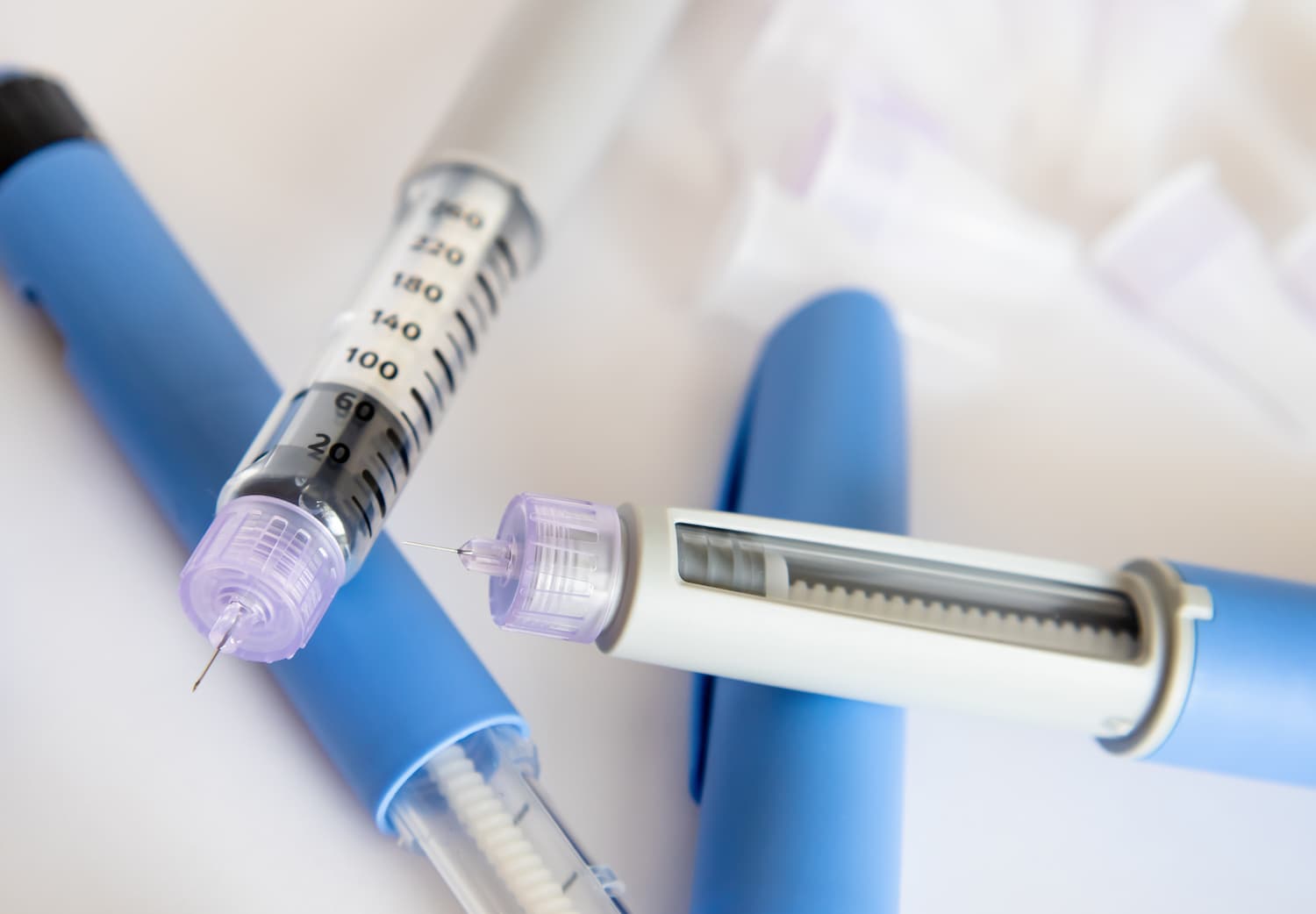- Clinical Technology
- Adult Immunization
- Hepatology
- Pediatric Immunization
- Screening
- Psychiatry
- Allergy
- Women's Health
- Cardiology
- Pediatrics
- Dermatology
- Endocrinology
- Pain Management
- Gastroenterology
- Infectious Disease
- Obesity Medicine
- Rheumatology
- Nephrology
- Neurology
- Pulmonology
GLP-1RAs May Lower Risk of Suicidal Ideation for Youth with Obesity, New Data Suggest
In a study of adolescents with obesity, those in the GLP-1RA group had a 33% lower risk of experiencing suicidal ideation or attempts compared with matched controls.

Adolescents with obesity prescribed a glucagon-like peptide 1 receptor agonist (GLP-1RA) are less likely to have suicidal ideation or attempts compared with those who only receive lifestyle intervention, researchers reported in a new study.
Specifically, among more than 6900 adolescents with obesity, those who received GLP-1RA therapy had a 33% lower risk of experiencing suicidal ideation or attempts compared to propensity score-matched controls treated with lifestyle intervention, according to the study published online in JAMA Pediatrics on October 14, 2024.
No signal for an increase in suicidal ideation or attempts associated with GLP-1RA use was seen across subgroups stratified by sex, race and ethnicity, GLP-1RA type, and diabetes status, as well as over a range of follow-up times up to 3 years, coauthors Liya Kerem, MD, MSc, and Joshua Stokar, MD, both of the Hebrew University of Jerusalem, reported in the study published online October 14, 2024, in JAMA Pediatrics.
While GLP-1RAs, such as semaglutide and liraglutide, are FDA-approved for the treatment of obesity in adolescents with a body mass index (BMI) greater than the 95th percentile for age and sex, “the neuropsychiatric outcomes associated with GLP1R are not well established, and, to our knowledge, have not been examined exclusively in adolescents,” Kerem and Stokar wrote. Findings on GLP-1 RA-associated depression and suicidal ideation among adults, the authors added, have been inconsistent. “Pediatric obesity is associated with an increased risk for both depression and suicidality. As GLP1R are increasingly used to ameliorate obesity in adolescents, there is a timely need to promptly investigate the potential association between GLP1R use and suicidality.”
For the current study, investigators used electronic health record (EHR) data from the TriNetX global database to identify adolescents aged 12 to 18 years diagnosed with obesity between December 2019 and June 2024. The data were from 120 health care organizations, mainly in the US. Participants were considered to have used a GLP-1RA if they were prescribed either liraglutide or semaglutide within 12 months of receiving an obesity diagnosis. Researchers compared adolescents using a GLP-1RA with those who only received lifestyle intervention.
The primary outcomes were the incidence of suicidal ideation or attempts, which were identified using International Statistical Classification of Diseases and Related Health Problems, Tenth Revision (ICD-10) codes recorded in patient EHRs during a 12-month follow-up period. Diagnoses of upper respiratory tract infections (URTI) were used as negative control outcomes, while gastrointestinal symptoms (GI) served as positive control outcomes to validate the findings, according to the study.
Researchers identified 4052 adolescents who were prescribed a GLP-1RA and 50 112 treated only with lifestyle intervention in the TriNetX database. Using propensity-score matching, they matched 3456 adolescents using a GLP-1RA (mean age, 15.4 years; 59% girls) with control participants treated with lifestyle intervention (mean age, 15.6 years; 62% girls). Each cohort was balanced for baseline demographic characteristics, psychiatric medications and comorbidities, and diagnoses associated with socioeconomic status and health care access, investigators noted.
The incidence of suicidal ideation or attempts was 1.45% among participants who received GLP-1RAs compared with 2.26% among those in the control group over 1 year of follow-up (HR 0.67, 95% CI 0.47-0.95; P = .02).
Results also showed that over 12 months of follow-up, diagnoses of GI symptoms were significantly more common among adolescents in the GLP-1RA group compared with the control group (6.9% vs 5.4%; HR 1.41, 95% CI 1.12-1.78; P = .003); however, those who received GLP-1RA therapy had lower risk for acute pancreatitis than those in the control group (0.29% vs 0.67%; HR 0.41, 95% CI 0.19-0.88; P = .02). Investigators also reported no significant difference in risk for URTI diagnoses between the 2 groups (10.33% vs 10.88%; 95% CI 0.88-1.17; P = .88).
“The observational retrospective nature of our study design precludes drawing causal inferences. However, the detected reduction in HRs for suicidal ideation among adolescents with obesity prescribed GLP1R suggests potential avenues for future research,” Kerem and Stokar noted.
Reference: Kerem L, Stokar J. Risk of suicidal ideation or attempts in adolescents with obesity treated with GLP1 receptor agonists. JAMA Pediatr. Published online October 14, 2024. doi:10.1001/jamapediatrics.2024.3812
Obesity Linked to Faster Alzheimer Disease Progression in Longitudinal Blood Biomarker Analysis
December 2nd 2025Biomarker trajectories over 5 years in study participants with AD show steeper rises in pTau217, NfL, and amyloid burden among those with obesity, highlighting risk factor relevance.
